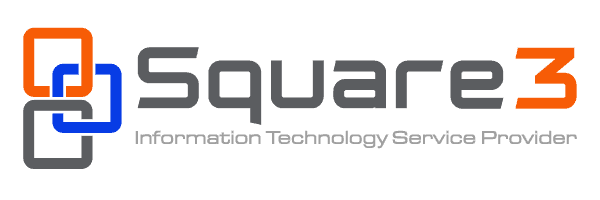How managed IT can eliminate downtime
Most businesses today rely entirely on digital platforms to connect with customers, sell products and services, and manage workflows. This has transformed digital systems such as servers, data centers, e-commerce websites, and workstation hubs into valuable business assets. Keeping these critical IT systems running is now a key priority for every organization. Customers have also grown accustomed to instant gratification and expect online services to be up and running around the clock.
Unfortunately, IT systems go wrong from time to time and cause severe downtime. A majority of downtime events result from network outages, systems failure, human error, cybercrime, and natural disasters. Unscheduled or unexpected outages can bring your entire business to a stand-still with costly implications.
The impact of downtime
Some analysts estimate the cost of an average downtime event to be between $5,600 and $9,000 per minute. But these figures are basically meaningless because the actual cost of downtime depends on the number of factors that come into play and the nature of the business itself – its size, model, and level of dependence on IT. For instance, Facebook lost $90 million in potential revenue following an outage that lasted only 14 hours in March 2019.
The total monetary cost of downtime includes lost revenue, recovery cost, wasted time and labor, business interruption, and lost customers. It may be difficult to come up with an exact figure, but even a few minutes of downtime can be financially devastating. Also, frequent and prolonged IT outages often appear as organizational incompetence and shine a bad light on your brand.
Facebook lost $90 million in potential revenue following an outage that lasted only 14 hours in March 2019.
Working with a managed IT partner to eliminate downtime
Downtime and outages can be challenging to predict and anticipate. The key to avoiding the negative effects of downtime is to manage high-risk areas to maximize IT uptime and predict systems availability. This calls for round-the-clock IT monitoring, proactive measures to protect uptime, and standby recovery plans in case of inevitable downtime. This is precisely what a managed IT service provider brings to the table in terms of safeguarding your enterprise against downtime.
Monitor the health of systems and devices
24/7 IT monitoring is crucial to maintain the optimal health of your IT infrastructure. Managed IT professionals identify and keep tabs on key performance areas such as network traffic, CPU and memory usage, server requests volume, and energy consumption, whose variables represent the status of the entire system. Any unexpected readings from these data points raise red flag alerts, and a technical support team quickly rushes in to diagnose and remedy the underlying problem.
Continuous monitoring helps identify and resolve hidden technical issues before they grow into full-blown disasters. The smallest changes in the expected behavior of the IT system could indicate an imminent systems failure or a cyberthreat about to unfold. According to the 2019 IT Outage Impact Study, about half of all downtime events are avoidable. Having a managed service provider keep track of your system is a surefire way to avoid unexpected downtime stemming from faults and malicious acts.
According to the 2019 IT Outage Impact Study, about half of all downtime events are avoidable.
Keep all your systems up to date
When it comes to IT, newer is always better. It’s important to keep your IT systems up to date if you want to stand a chance against new threats and meet the growing digital demands. Older electronics are more likely to breakdown and often lack the necessary features to utilize new digital solutions and innovations. Modern hardware and software also improve your overall IT performance efficiency, thereby increasing productivity and reducing IT overheads.
A managed IT partner can help you keep up with emerging technologies and security measures by updating and patching system software with the latest releases and replacing old hardware with upgraded models. A proactive MSP will not only recommend the new changes, but will also take part in testing, installing, and running any new additions to the system. Preventing downtime is all about controlling risk; any outdated component in your system is a potential risk for compatibility issues, failure, and a possible security loophole.

Help create and test a disaster recovery strategy
Even with close monitoring and running modern systems, some downtime events are entirely unavoidable. For instance, a natural disaster such as adverse weather conditions can damage the physical infrastructure that keeps your business online. Your employees can also make grave errors leading to resource and data unavailability. In preparation for such cases, you need to have a backup plan that can instantly restore all your data and operations without missing a beat.
A managed service provider will set up a dependable backup and disaster recovery system to keep your data assets safe and accessible during a crisis. MSPs leverage cloud technologies to back up business data and other digital resources. Cloud backups incorporate redundant data centers in multiple physical locations and virtualized storage units, making them highly reliable and easily accessible from anywhere.
The most significant impact of a downtime event is business interruption; an MSP lets you maintain business continuity even after a catastrophic systems failure or total data loss. On top of that, the MSP will regularly test your backup and recovery system and make the necessary adjustments to ensure it will work without a hitch when needed.
Essentially, an MSP takes on the responsibility of protecting your organization from downtime using every possible measure. An MSP shields you from the consequences of downtime and, in the process, also helps in increasing productivity by guaranteeing the availability and optimal working conditions of your IT infrastructure.
Maintaining a safe and secure IT system is now more critical than ever, with so many organizations forcing their employees to work from home due to the COVID-19 pandemic. The last thing you want is to break the connection and collaboration between your remote co-workers, business associates, and customers during these difficult times.

















